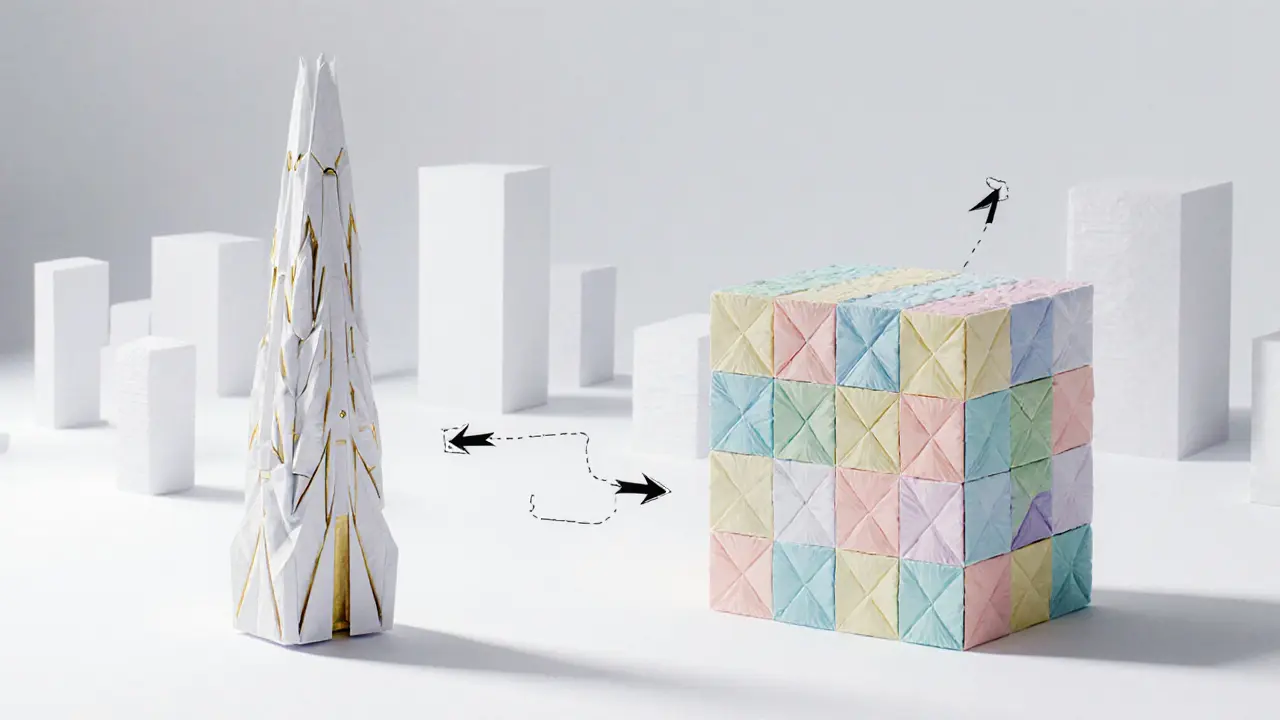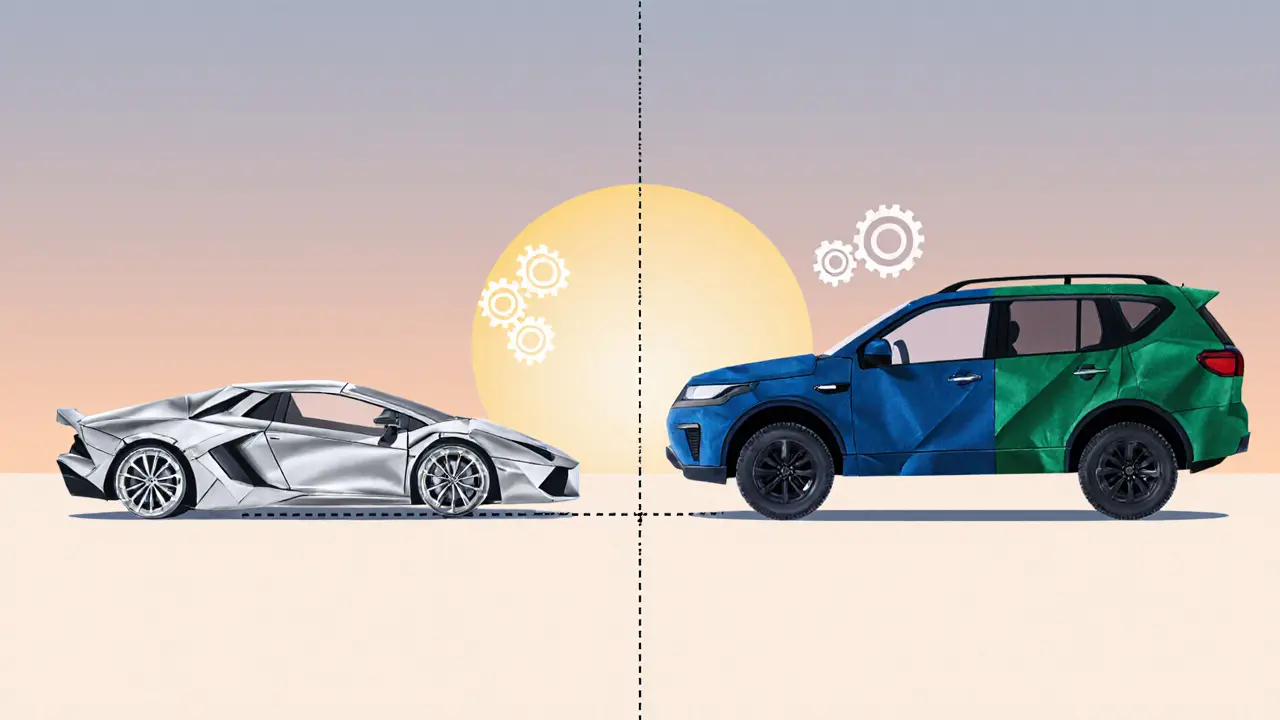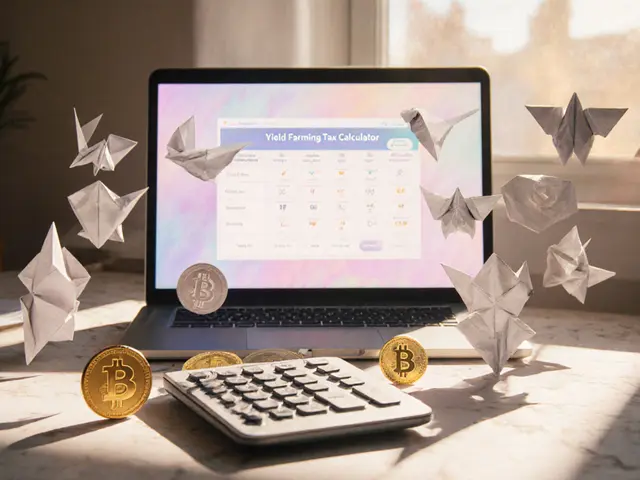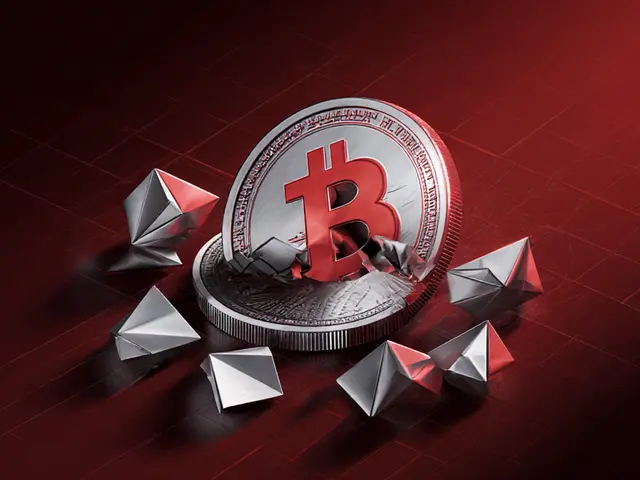NFT Gas Cost Calculator
Calculate the gas savings you'll achieve by choosing ERC-1155 over ERC-721 for token transfers. Input your transaction volume to see how batch processing affects costs.
Transaction Details
Trying to pick the right token standard for your next blockchain project can feel like choosing between a sports car and a family SUV. Both get you where you need to go, but the ride, fuel consumption, and cargo space differ dramatically. In the Ethereum ecosystem the two most common choices are ERC-721 - the original non‑fungible token (NFT) standard - and ERC-1155, a newer multi‑token framework that can handle fungible, semi‑fungible, and non‑fungible assets in a single contract. This guide walks through the core differences, performance numbers, and real‑world use cases so you can decide which standard fits your needs.
What the standards actually are
ERC-721 is a token interface that was formalised in January 2018 by William Entriken, Dieter Shirley, Jacob Evans, and Nastassia Sachs. Its key promise is that each token ID represents a unique, indivisible asset - think of a one‑of‑a‑kind painting or a single in‑game sword. The contract stores a static metadata URI for every token, and ownership checks run on a per‑token basis.
ERC-1155 arrived a few months later, introduced by Enjin’s Witek Radomski. Instead of dedicating a whole contract to one token type, ERC‑1155 lets a single smart contract manage an unlimited variety of token classes. A single function call can mint, transfer, or burn dozens of tokens - whether they are fungible coins, semi‑fungible tickets, or unique NFTs.
Architectural contrast
ERC‑721’s architecture is straightforward: each token lives in its own slot, and its metadata lives on‑chain or points to an off‑chain URL. This simplicity translates to a low learning curve - most tutorials, OpenZeppelin libraries, and community examples target ERC‑721. The downside is that every new collection usually means deploying a fresh contract, which incurs additional gas and storage costs.
ERC‑1155, by contrast, bundles token IDs into a single contract storage map. The standard defines balanceOf(address, uint256) and uri(uint256) functions that work for any token ID, and introduces safeBatchTransferFrom to move many tokens in one transaction. The trade‑off is a steeper implementation curve: developers need to manage token‑type identifiers, handle mixed‑type batches, and understand the extended security callbacks.
Performance and cost numbers
When you start measuring gas, the gap widens dramatically. According to Chetu’s blockchain analysis, a single ERC‑721 transfer typically consumes around 65,000 gas, while ERC‑1155 can batch‑transfer ten tokens for roughly 120,000 gas - a **90 % reduction per token** compared to processing each transfer individually.
Real‑world benchmarks from Merkle Science show ERC‑721 minting latency of 15‑30 seconds per token, whereas optimized ERC‑1155 implementations can mint and transfer 150‑200 tokens per second on a busy network. The batch capability also shrinks block space usage, which eases congestion during NFT drops.
Security and user‑experience features
ERC‑1155 includes built‑in validation hooks (onERC1155Received and onERC1155BatchReceived) that let contracts reject malformed or accidental transfers. This helps prevent the classic “sent to the wrong address” problem that haunts many ERC‑721 marketplaces. Additionally, ERC‑1155 logs every mint, burn, and transfer event with the token ID and amount, giving developers richer on‑chain audit trails.
ERC‑721 does have a transfer hook (onERC721Received), but it only works for single‑token moves. If a user accidentally sends an NFT to a contract that can’t handle it, the token can become locked forever - a risk that has cost collectors thousands of dollars.

Typical use cases
- ERC-721: Art galleries, profile picture (PFP) projects, single‑asset collectibles where uniqueness is the selling point. Examples include Bored Ape Yacht Club, CryptoKitties, and most OpenSea drops.
- ERC-1155: Gaming economies, ticketing platforms, loyalty programs, and any system that needs both fungible and non‑fungible items. Notable adopters are Enjin’s game assets, Immutable X’s GameFi titles, and several metaverse land‑parcel schemes.
If your product only ever needs one type of NFT, ERC‑721’s simplicity may win. If you anticipate mixing in‑game currency, power‑ups, and rare gear, ERC‑1155 saves you from deploying multiple contracts.
Developer ecosystem and learning curve
OpenZeppelin’s ERC‑721 contracts have been battle‑tested for years. New developers can spin up a collection in a weekend, following countless blog posts and video tutorials. ERC‑1155 libraries are also mature - OpenZeppelin offers a solid base, and Enjin’s SDK adds game‑specific utilities - but the multi‑token model typically requires 4‑6 weeks of focused learning for junior engineers.
Community support mirrors this split: ERC‑721 boasts over 15,000 GitHub repos (as of late 2024) and a bustling Reddit thread in r/ethereum. ERC‑1155 has fewer repos (around 9,000) but is growing rapidly in the gaming and enterprise sectors, where forums like the Enjin Discord are full of implementation advice.
Cost‑benefit checklist
| Aspect | ERC‑721 | ERC‑1155 |
|---|---|---|
| Token Types Supported | Non‑fungible only | Fungible, semi‑fungible, non‑fungible |
| Contract Deployment | One contract per collection | Single contract can host unlimited collections |
| Gas per Transfer | ~65k (single) | ~12k per token in batch (10‑token batch ≈120k) |
| Batch Operations | Not native, requires loops | Built‑in safeBatchTransferFrom |
| Security Hooks | Single‑token onERC721Received |
Both single and batch hooks, auto‑recovery |
| Typical Use Cases | Art, PFPs, collectibles | Games, tickets, loyalty points, hybrid assets |
| Learning Curve | 2‑3 weeks for basics | 4‑6 weeks for full feature set |

Future outlook
Both standards will coexist for the foreseeable future. The community has already introduced ERC‑721A - an optimized version that slashes batch‑mint gas by up to 80 % - to address ERC‑721’s cost concerns. Meanwhile, ERC‑1155 continues to evolve with EIP proposals that add cross‑chain bridges and Layer‑2 roll‑up compatibility, keeping it ahead in high‑throughput gaming and metaverse projects.
Analysts predict that by 2027, over two‑thirds of new GameFi launches will prefer ERC‑1155, while the high‑value art market will remain anchored to ERC‑721 because collectors value the historic provenance and marketplace familiarity.
How to choose the right standard for your project
- Define your token mix. If you need only unique items, go ERC‑721. If you anticipate a combination of currencies, consumables, and unique gear, ERC‑1155 is the clear winner.
- Calculate gas budget. Run a quick simulation on a testnet: mint 10 tokens with each standard and compare gas reports. Use the results to forecast costs for your expected volume.
- Assess developer resources. Do you have a senior solidity engineer comfortable with multi‑token bookkeeping? If not, factor in training time or consider hiring.
- Check marketplace compatibility. Major platforms like OpenSea still prioritize ERC‑721 for art listings, though they now support ERC‑1155 for batch sales. Verify that your target marketplace accepts the chosen standard.
- Future‑proof for upgrades. If you think you might add new token types later, start with ERC‑1155 to avoid redeploying contracts.
Follow these steps, and you’ll land on a decision that balances cost, flexibility, and time‑to‑market.
Quick FAQ
Can I use both ERC‑721 and ERC‑1155 in the same dApp?
Yes. Many projects deploy a base ERC‑1155 contract for game items and a separate ERC‑721 contract for exclusive collectibles. The two standards are fully interoperable on Ethereum.
Which standard is safer against accidental transfers?
ERC‑1155’s batch‑receive hooks can reject transfers sent to the wrong address, offering a built‑in safety net that ERC‑721 lacks.
Do gas savings from ERC‑1155 matter for small collections?
For a handful of tokens the difference may be modest, but once you pass 50‑100 items the batch‑mint savings become noticeable, especially on congested networks.
Is ERC‑721A a replacement for ERC‑721?
ERC‑721A is an extension that keeps ERC‑721 compatibility while improving batch mint gas. It’s a good upgrade path if you stay within a pure‑NFT use case.
What wallets support ERC‑1155 tokens?
Most major wallets - MetaMask, Trust Wallet, and Coinbase Wallet - now display ERC‑1155 balances, and specialized gaming wallets like Enjin Wallet provide richer UI for batch items.
Bottom line: ERC‑721 shines for pure, single‑type NFTs where simplicity is king. ERC‑1155 dominates in multi‑asset, high‑volume scenarios where gas efficiency and batch features translate into real dollars saved. Choose the one that aligns with your token mix, budget, and development bandwidth, and you’ll avoid costly re‑architectures down the line.





adam pop
Everyone loves to talk about ERC‑721 and ERC‑1155 like they're just technical choices, but the truth is deeper-big players are pushing ERC‑1155 to lock developers into multi‑token ecosystems they can control behind the scenes. By bundling fungible and non‑fungible assets in one contract, the protocol gives them a single point of surveillance, making it easier to sniff out transaction patterns and potentially manipulate market dynamics. The so‑called “gas savings” are just a distraction while the underlying architecture becomes a data‑harvesting tool. Look at how the major marketplaces have already updated their UI to favor batch listings; it's not a coincidence.
Michael Hagerman
Okay, I’m totally losing my mind over this debate-ERC‑721 is like that classic hero in a movie, always the star, while ERC‑1155 is the sneaky side‑kick that somehow steals the spotlight! The numbers look clean, but when you dive into the code you’ll see the real drama: a single contract handling a zillion token types can either be a blessing or a cursed mess. If you’re not ready for that kind of chaos, you’ll definitely be pulling your hair out. It’s absolutely essential to run a test‑net trial before you commit, otherwise you’ll end up with a disaster that could’ve been avoided.
Laura Herrelop
When we examine the very ontology of digital scarcity, the choice between ERC‑721 and ERC‑1155 transcends mere engineering and becomes a reflection of our collective metaphysics. ERC‑721 posits each token as an isolated, immutable essence, echoing the ancient idea of a soul bound to a single vessel. In contrast, ERC‑1155 treats tokens as mutable states within a shared substrate, suggesting that identity is emergent rather than fixed. This duality mirrors the age‑old debate between essentialism and constructivism, where the former clings to immutable truths and the latter embraces fluidity. Yet, the market forces that drive these standards are not neutral observers; they are, in fact, orchestrated by entities that benefit from the opacity afforded by batch operations. Every batch transfer is a veil, a smokescreen that conceals the granular flow of value from prying eyes. The so‑called “gas efficiency” is therefore a double‑edged sword, cutting costs while also cutting transparency. Moreover, the batch‑receive hooks in ERC‑1155 create a gatekeeping mechanism that can be programmed to reject certain addresses, effectively controlling who may participate. One cannot ignore the subtle way in which such mechanisms reinforce power asymmetries within the ecosystem. If a developer unwittingly adopts ERC‑1155 without scrutinizing the underlying access controls, they may hand over a backdoor to a centralized authority. This is reminiscent of the ancient alchemists who promised gold while secretly poisoning their apprentices. The philosophical implications are profound: we must ask whether we are comfortable surrendering the sanctity of individual provenance for the sake of operational convenience. In a world where provenance equals authenticity, eroding that line may forever alter the value perception of digital art. Thus, the decision is not merely technical but an ethical crossroads. Choose wisely, for the standard you embed today may define the moral architecture of your project for years to come.
Nisha Sharmal
Oh sure, let’s romanticize a piece of code like it’s some philosophical tome-news flash, it’s still just Solidity that runs on a global network, not some mystical oracle. While you’re busy pondering cosmic implications, the rest of us are dealing with the practical reality that ERC‑1155 actually lets a game launch 10‑times faster and saves real money. If your head’s too busy chasing metaphors, you’ll miss the fact that the batch transfer feature is the reason some studios can afford to ship updates without breaking the bank. So enjoy your existential crisis, but remember the players are waiting for a functional product, not a dissertation.